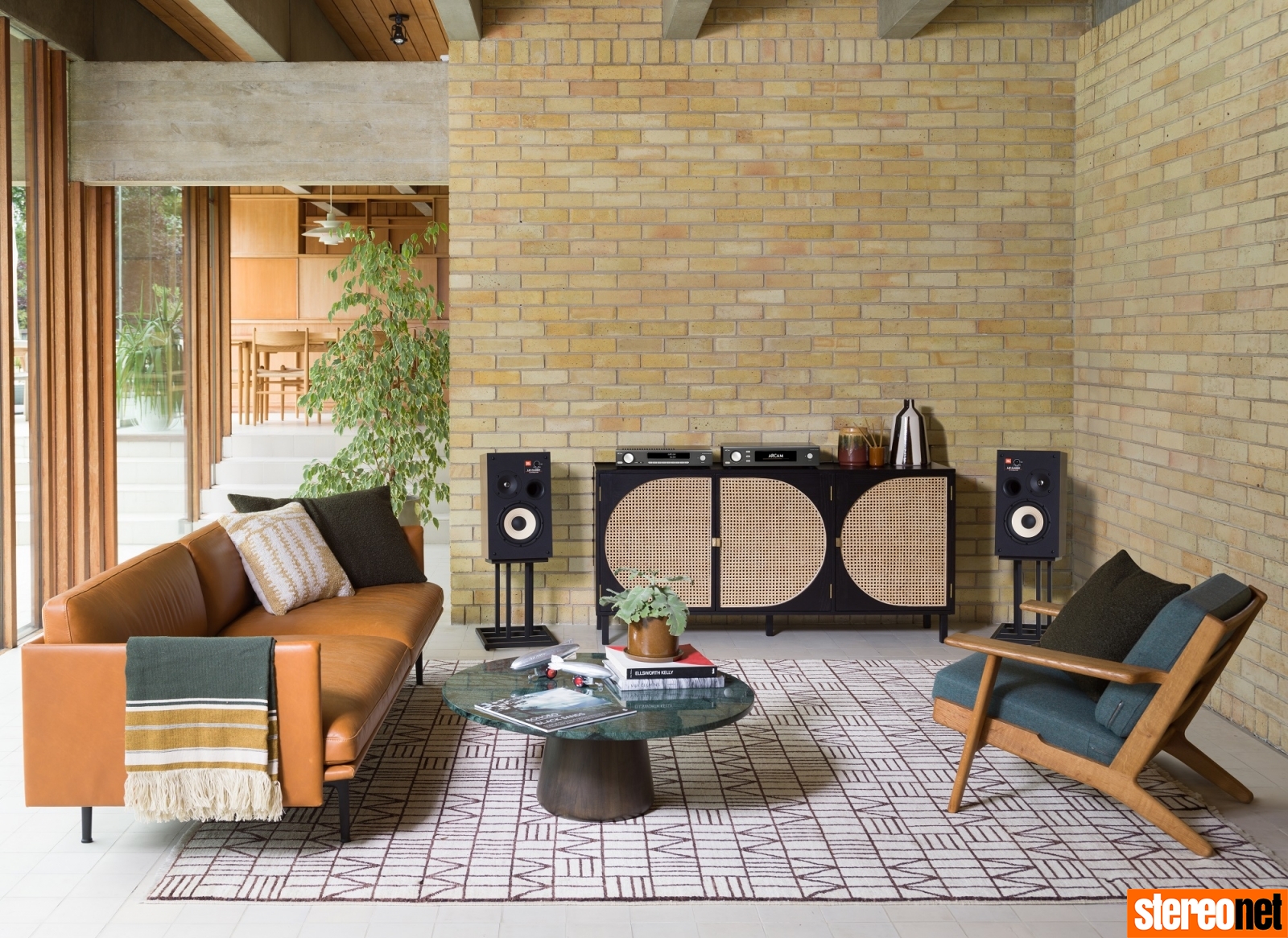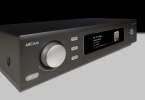Arcam ST60 Streamer Review

James Michael Hughes samples the digital delights of this premium-priced streaming solution…
Arcam
ST60 Streamer
AUD $2,495 RRP

Announced back in September 2020, the ST60 is Arcam's first streaming hi-res network music player. While loaded with features and hugely versatile, it is simple and straightforward to operate and offers users a number of interfaces – either direct or via Arcam's MusicLife app.
The design is based around an ESS9038 32-bit/192kHz stereo DAC from the ESS Sabre range and allows MQA files to be unpacked. In addition, AIFF, ALAC, FLAC, and WAV formats are also supported, DSD files to 11.3MHz, and compressed legacy formats. It's designed to be Roon Ready and work as a Roon Endpoint, letting users control their TIDAL, Qobuz and NAS audio library from this neat interface. The ST60 is able to handle all the major players, including Deezer, Napster, Qobuz, Spotify and Tidal, and is also compatible with AirPlay 2 and Google Cast, as well as handling UPnP sources.
Digital inputs include USB 2.0, two RCA coaxial (working at up to 32/192), two TOSLINK optical ports (32/96), plus wired and wireless options for Ethernet. Additionally, the Arcam features balanced XLR and single-ended RCA analogue outputs; the former delivers 4.5V and the latter 2.2V. When first powered on, the unit takes about thirty seconds to boot up.

Arcam's MusicLife app gives you control of music stored on supported devices and network drives, and is free to download from the App Store and the Google Play Store. Operation is straightforward and intuitive. The front panel is simple and uncluttered, with just a few buttons and knobs. The LCD display is clear and informative, but the remote handset and MusicLife app allow more involved operation. Usefully, the display indicates the sampling rate and (with Tidal) whether or not the album or track being streamed is MQA; it also displays an album cover where appropriate. It's large and easy to read at a distance.
I used MusicLife on an Android phone, and it worked okay for streaming. However, it would not let me access material on an external hard drive – I had to do that directly via the remote using the ST60's screen. Some have complained that the app is 'buggy' and unreliable – especially the Android version. Fortunately, a major revamp is said to be in the pipeline; it was scheduled for release in April 2021, but the situation in India – where the work is being carried out – has put this back. Also, at the time of writing this review, Arcam is still awaiting Roon certification for the ST60 – so hopefully, both matters will be resolved soon.

THE LISTENING
I began by streaming TIDAL and Spotify through Chromecast, and it was immediately apparent that the ST60 delivered an impressively clean and open sound that was detailed and natural. Not yet owning a 'proper' streamer myself, I'd been using a small optical Chromecast device for TIDAL/Spotify. While this delivered listenable results, music streamed via the ST60 sounded significantly cleaner, crisper and better focused. Playing Tidal through the MusicLife app, results were audibly superior, especially on MQA files.
Trying Fearless by Taylor Swift via Tidal through Chromecast, this album played at 44.1kHz and Normal quality, whereas through MusicLife, the sampling frequency was 96kHz in MQA. While the 44.1kHz file was quite good, the 96kHz MQA file sounded noticeably cleaner and more detailed. There was more space around voices and instruments, plus a tighter, firmer bass line. The sound was fresher and less compressed. Each track had greater individuality and a sharper sense of focus. At 44.1kHz without MQA, results were blander, more generalised and musically less involving.
Stravinsky's Scherzo a la Russe with Simon Rattle and the City of Birmingham Orchestra on EMI/Warner was fun. While this is MQA encoded, the sampling frequency is only 44.1kHz, perhaps due to it being an older recording from the late nineteen eighties. Comparing the TIDAL MQA streamed file to my first-press CD from 1989, the two sounded pretty similar. I was using Denon's DCD-A110 SACD player, which upsamples 44.1kHz and is a better-than-average silver disc spinner. With careful listening, I formed a slight preference for CD over streamed. The differences weren't massive, but CD via the Denon sounded a shade more immediate and focused, with extra sharpness and bite.

The Deutsche Grammophon SACD of Esa-Pekka Salonen conducting the Los Angeles Philharmonic in music by Mussorgsky, Bartok, and Stravinsky is a lovely thing to hear. This recording is notable for a warm, clear, natural tonal balance and some very clean and powerful bass drum work. The streamed MQA version at 96kHz pretty much matched the SACD for clarity and detail. The bass drum had similar weight and power, sounding deeper and fuller than you'd typically hear from ye olde Red Book CD.
Seeing the DG set of Pierre Boulez's Stravinsky recordings listed, I compared Petrouchka streamed via the ST60 to my CD via Denon's DCD-A110. Again, the streamed files were 44.1kHz and not MQA, and the difference was more marked. The streamed sound wasn't bad, but the CD was noticeably fuller and weightier, making the streamed version seem thinner with less tonal body. The CD offered a sound of greater substance, with more density in the middle and lower registers.
Yet with MQA material transferred at sampling rates of 96kHz or higher, the ST60 sounded very good, better than Red Book 44.1kHz CD. Where I was able to compare the two, 96kHz MQA often seemed nearer to SACD in terms of quality. MQA has its detractors, of course. Some believe it sounds worse, while others think it has no point. The counterargument against MQA runs – why bother with a compressed format like MQA, even if (as claimed) it is lossless? Why not just stream uncompressed hi-res files? I'm sure this will run and run, but the point is that people can make up their own minds – and the Arcam plays every type of file you could reasonably ever want.

A benefit of streaming TIDAL via MusicLife is that no gaps are inserted between tracks where the music is continuous. Gaps can be a big problem with classical music, especially opera, where long unbroken stretches of music are divided into separate tracks to facilitate access. Before the ST60 arrived, I'd been streaming the new LSO Live recording of Vaughan Williams' Symphonies 4 and 6 when an annoying one-second gap was needlessly inserted between movements, when there should be no break. Via MusicLife it was fine!
I also tried a USB hard drive packed full of hi-res downloads – and got excellent sonic results, even if it was a bit more fiddly than streaming services. Finding albums proved slow, but the sound was extremely good considering the cost of the ST60. It proved super crisp, clear and detailed – and better than the on-demand version unless a high bitrate stream was being played.
Usefully, the ST60's display reproduced the name of each file/folder, and these are displayed on-screen in strict alphabetical order. As most of the music on my hard drive is classical, the composer's surname – Bach, Beethoven, Brahms, Bruckner, etc. – is first on the file name. Some streamers – but not the ST60 – don't always follow alphabetical order, so what should be under B might fall under S. Why? Because metadata has (say) the conductor's name 'Sir John Barbirolli' as the first piece of information. Happily, the Arcam didn't fall into this trap.
Although I mostly used the Denon DCD-A110 SACD player for CD/SACD comparisons, I also tried my dedicated Audiolab 6000CDT CD transport through the ST60. I got excellent results, so ST60 users might want to try using it as a DAC. It's pretty much as good as I've heard at the price, to date.

THE VERDICT
 I found Arcam's new ST60 streaming DAC both easy to use and rewarding to listen to. I couldn't fault it for sound quality at the price, and was happy with the performance of MQA tracks from TIDAL via MusicLife. Hopefully, once the MusicLife app gets its update/makeover, the various issues that some users have experienced will disappear.
I found Arcam's new ST60 streaming DAC both easy to use and rewarding to listen to. I couldn't fault it for sound quality at the price, and was happy with the performance of MQA tracks from TIDAL via MusicLife. Hopefully, once the MusicLife app gets its update/makeover, the various issues that some users have experienced will disappear.
The appeal of being able to sit in your listening chair and scroll through zillions of albums is not hard to understand. But speaking as someone who has yet to wean himself off a lifetime's addiction of buying music in a physical form, I've yet to add a proper streamer to my hi-fi system. Once the quality of streamed sound exceeds that of CD – especially for titles never likely to be released on SACD or Blu-ray Audio – then streaming becomes almost irresistible. I'm not sure it's quite there yet, and I still enjoy visiting record shops and buying CDs and LPs. It's a difficult habit to break.
All the same, products such as this make a great case for streaming. It is surprisingly affordable yet turns in really good sound and does pretty much everything I'd want a streamer to do. I am still mulling over which model I might eventually go for, but Arcam's ST60 could well be at the top of my list if and when decision time comes.
For more information visit Arcam
James Michael Hughes
An avid audiophile for many decades, Jimmy has been writing about hi-fi since 1980 in a host of British magazines, from What Hi-Fi to Hi-Fi Choice. Based in London, England, he’s one of the UK’s most prolific record and CD collectors – no streaming service can yet match his amazing music collection!
Posted in:Hi-Fi Sources Streaming Applause Awards 2021
Tags: arcam advance audio
JOIN IN THE DISCUSSION
Want to share your opinion or get advice from other enthusiasts? Then head into the Message Forums where thousands of other enthusiasts are communicating on a daily basis.
CLICK HERE FOR FREE MEMBERSHIP
Trending
applause awards
Each time StereoNET reviews a product, it is considered for an Applause Award. Winning one marks it out as a design of great quality and distinction – a special product in its class, on the grounds of either performance, value for money, or usually both.
Applause Awards are personally issued by StereoNET’s global Editor-in-Chief, David Price – who has over three decades of experience reviewing hi-fi products at the highest level – after consulting with our senior editorial team. They are not automatically given with all reviews, nor can manufacturers purchase them.
The StereoNET editorial team includes some of the world’s most experienced and respected hi-fi journalists with a vast wealth of knowledge. Some have edited popular English language hi-fi magazines, and others have been senior contributors to famous audio journals stretching back to the late 1970s. And we also employ professional IT and home theatre specialists who work at the cutting edge of today’s technology.
We believe that no other online hi-fi and home cinema resource offers such expert knowledge, so when StereoNET gives an Applause Award, it is a trustworthy hallmark of quality. Receiving such an award is the prerequisite to becoming eligible for our annual Product of the Year awards, awarded only to the finest designs in their respective categories. Buyers of hi-fi, home cinema, and headphones can be sure that a StereoNET Applause Award winner is worthy of your most serious attention.














